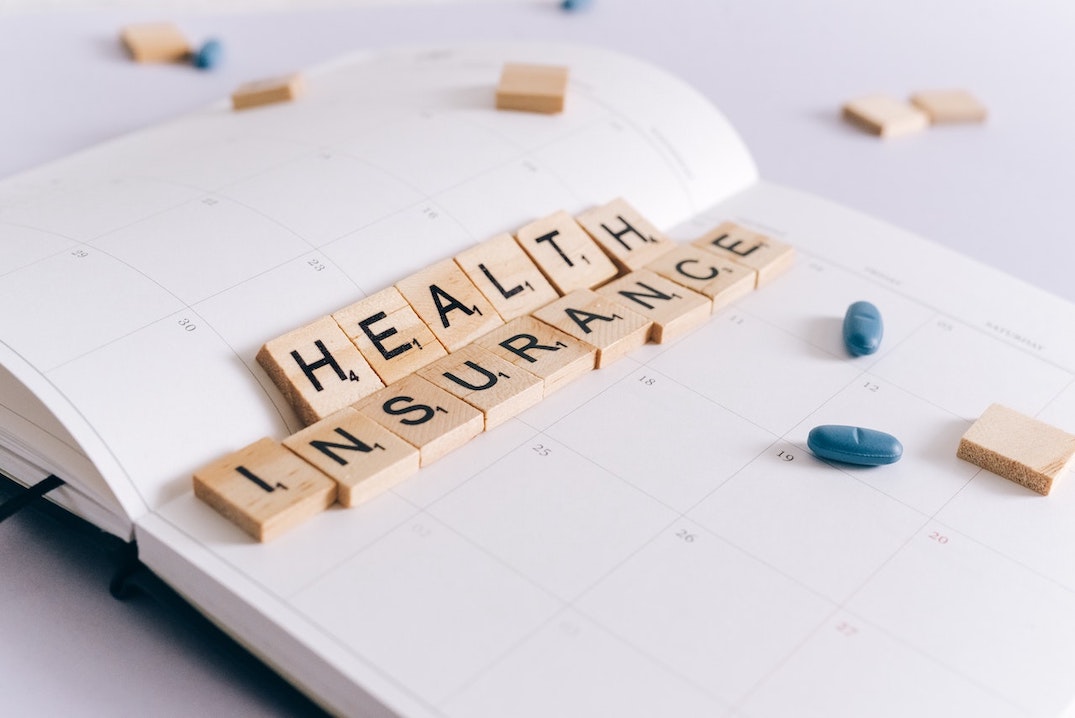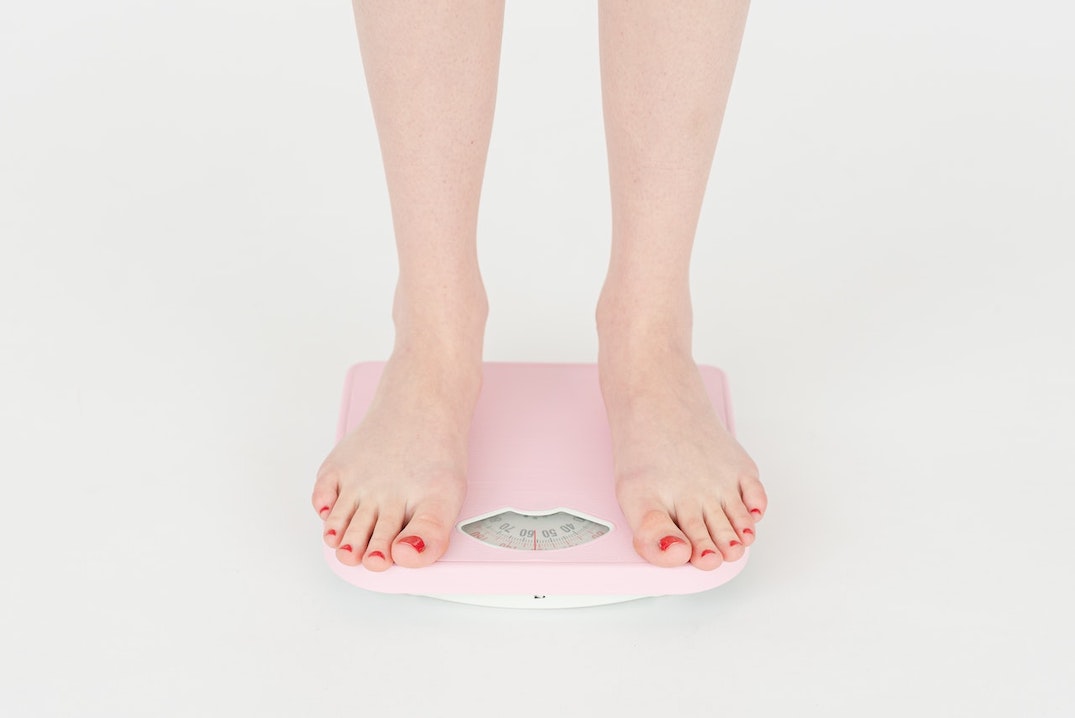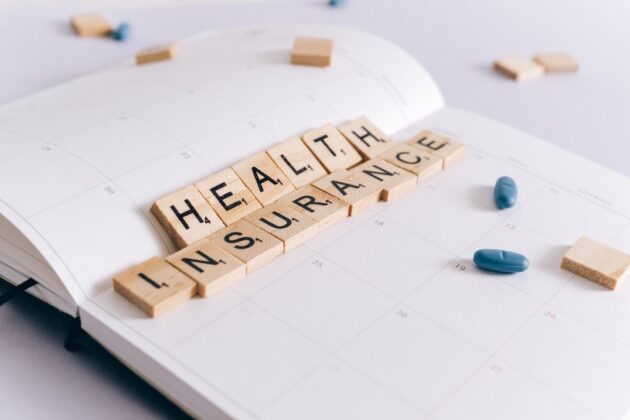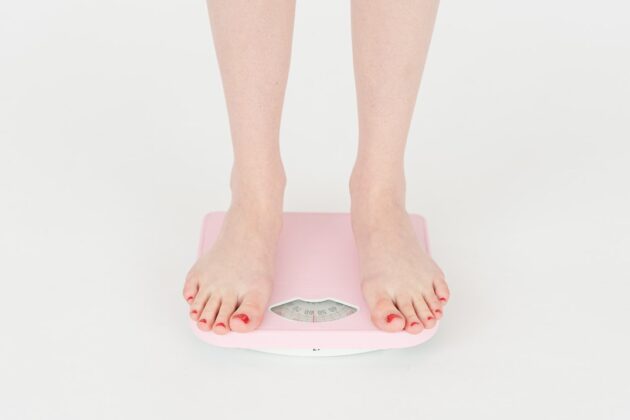Ozempic Diet Plan: Best Foods to Eat & Which to Avoid (with printable PDF)
There is no one-size-fits-all diet plan for those who are on Ozempic. Instead, it’s essential to emphasize a balanced diet while taking this medication to make sure you are setting yourself up for success.
When taking Ozempic, it’s important to eat a well-balanced diet emphasizing vegetables, whole grains, lean meats, low-fat dairy products, and sufficient protein. You should also avoid eating foods that are fried, high in sugar, and very processed to maximize your weight loss.
The active ingredient in Ozempic mimics the hormone GLP-1, which is responsible for delaying gastric emptying. If food stays in your stomach longer, you stay full longer. It also suppresses the hormone glucagon, reducing your hunger levels throughout the day.
While this may seem like a dream come true to those who struggle with their weight, taking Ozempic alone is not enough. An emphasis on diet and lifestyle habits is essential in ensuring long-term, sustainable weight loss without negative health implications.
This guide goes over what a healthy diet on Ozempic looks like, including the best foods to eat, what to avoid, a sample Ozempic meal plan PDF, and more.

Reach your weight loss goals faster with support from a Registered Dietitian
90% of Zaya Care patients pay $0 for one-on-one counseling with an RD
Ozempic diet overview
Unfortunately, it’s tough to know what a healthy diet is nowadays. With the media taking over and a slew of uncredentialed influencers encouraging restrictive diets, it’s no wonder people are struggling.
A healthy Ozempic diet emphasizes fruits, vegetables, whole grains, nuts, seeds, legumes, lean meats, and low-fat dairy products and limits processed foods to moderation. It’s important to balance your meals by aiming to have a source of fruits and/or veggies, carbs, and protein at each meal.
While taking Ozempic, protein is especially important, and it should be prioritized at every meal and snack. The rate of weight loss on Ozempic will vary by individual, however, some report rapid weight loss when starting the medication. To avoid muscle loss, it’s important to consume a diet rich in high-quality protein which can be found mainly in meat, seafood, eggs, dairy, and soy.
If you don’t eat enough calories and/or protein while on Ozempic, you can lose valuable lean body mass. Muscle loss can negatively impact your metabolic health in the long term which can also make maintaining your weight loss more difficult.
While there are currently no set recommendations for protein intake while on Ozempic, it’s encouraged to meet the minimum requirements of 0.8 – 1 grams per kilogram of body weight per day as set by the 2020-2025 Dietary Guidelines for Americans.
For example, if you weigh 150 pounds, you can find out your recommended protein needs by doing the following calculation:
150lbs ÷ 2.2 = 68 kilograms
68 kilograms × 0.8 = 54 grams
68 kilograms × 1.0 = 68 grams
Recommended protein range = 54 to 68 grams per day.
Best foods to eat on Ozempic
If you are taking Ozempic for weight loss, there are some foods you will want to prioritize to get the most out of your experience. Below are some of the best foods to incorporate on your weight loss journey with Ozempic.
1) Lean proteins
As mentioned above, protein is a vital nutrient when taking Ozempic. However, lean proteins are best. High-fat protein sources are more likely to result in an upset stomach while on this medication.
Good sources of lean proteins include lean cuts of beef, skinless poultry, fish and shellfish, tofu, and beans.
2) Fruits and vegetables
Fruits and vegetables are loaded with essential vitamins, minerals, antioxidants, and fiber. They should be included in any healthy diet regimen as much as possible.
Additionally, the fiber content in fruits and vegetables may help keep your bowels moving. A common side effect of Ozempic is constipation as a result of the slowdown in digestion.
3) High-fiber foods
High-fiber foods such as beans, legumes, whole grains, nuts, and seeds help with satiety and bowel regularity. Fiber digests slowly in the gut which can increase fullness and regulate appetite. Studies show it may also increase natural GLP-1 levels in the body.
While fiber can help avoid constipation while on Ozempic, those not used to it may experience discomfort. If you aren’t used to eating a high-fiber diet, be sure to incorporate high-fiber foods slowly over time instead of all at once.
4) Healthy fats
Good sources of mono and polyunsaturated fats, also known as “healthy” fats can be found in olive oil, olives, nuts, seeds, and fatty fish. These types of fats are associated with many health benefits as well as increased satiety.
Like fiber, fats take longer to digest. Avoid large high-fat meals as too much fat in one sitting while taking Ozempic may cause nausea or upset stomach.
>> Read more: How many grams of fat per day to lose weight?
5) Dairy
Some individuals taking Ozempic experience aversions to certain foods, most commonly meats. Dairy can be a rich source of protein while taking this medication, so you don’t have to rely on eating meat.
Additionally, dairy products are rich in calcium and some research has found that low calcium levels may be associated with a higher body weight.
6) Fermented foods
Fermented foods such as yogurt, kefir, sauerkraut, and miso, are excellent sources of probiotics. Some animal studies even suggest that these foods may help boost your body’s natural GLP-1 hormone, but further research is still needed.
Foods to avoid on Ozempic
While there are no foods that are off-limits while taking Ozempic, there are some foods that you may want to avoid if you are experiencing side effects. You may be eating too many of these if you’re not losing weight on Ozempic.
Below are some common foods you may wish to avoid while taking this medication
1) Fried foods
Fried foods are high in saturated fats which can cause upset stomach and nausea while taking Ozempic. Additionally, fried foods should be limited in a healthy diet as they can increase the risk of obesity, heart disease, and cancer.
2) Sugary foods and beverages
Sugary foods and drinks are linked to obesity, type 2 diabetes, heart disease, and many other chronic conditions. Sugary foods and drinks also increase blood sugar levels and can counteract the effects of Ozempic.
3) Highly processed foods
Processed foods tend to be high in sugar and fats which, as mentioned above, can worsen uncomfortable side effects and potentially counteract the effects of Ozempic. Heavily processed foods such as frozen meals, packaged snack foods, and packaged baked goods are also associated with adverse health implications if consumed in excess. Instead, limit these foods.
4) High-fat meats
High-fat cuts of meat, particularly processed meats, should be limited on a healthy diet, especially while on Ozempic as it can exacerbate certain side effects. A high intake of high-fat meats may also increase your risk of various cancers.
5) Alcohol
While there are currently no disclaimers for alcohol intake while taking Ozempic, it is encouraged to limit your intake of alcohol to avoid a potential low blood sugar event. This is particularly important for those who have a history of diabetes.
Example Ozempic diet plan
Below you can see a sample 1,800-calorie meal plan that is healthy for someone taking Ozempic. Note that your ideal meal plan while taking Ozempic will vary based on health conditions, weight, preferences, and more.
You can download a printable PDF of our sample Ozempic meal plan here.
Breakfast (500 Calories)
- Omelette: 3 egg whites, 1 whole egg, spinach, tomatoes, and mushrooms. Cooked with 1 tsp of olive oil.
- Whole-grain toast: 1 slice, topped with a thin spread of almond butter.
- Greek Yogurt: 1 cup of plain, non-fat Greek yogurt mixed with a handful of blueberries and a sprinkle of chia seeds.
- Green tea: 1 cup of green tea without sugar.
Morning Snack (200 Calories)
- Apple Slices: 1 medium apple.
- Almonds: A small handful (about 10-12 nuts).
Lunch (500 Calories)
- Grilled Chicken Salad: A generous portion of mixed greens, 4 oz of grilled chicken breast, cherry tomatoes, cucumber, and carrots, dressed with 1 tbsp of balsamic vinegar and 1 tsp of olive oil.
- Quinoa: 1/2 cup cooked, to add fiber and protein.
- Fermented Food: 1/2 cup of sauerkraut on the side.
Afternoon Snack (200 Calories)
- Carrot and Cucumber Sticks: With 2 tbsp hummus for dipping.
- Kefir: 1 cup of low-fat plain kefir for a probiotic boost.
Dinner (400 Calories)
- Salmon: 4 oz baked salmon for healthy fats and protein.
- Steamed Broccoli and Cauliflower: 1 cup, seasoned with herbs.
- Brown Rice: 1/3 cup cooked, a high-fiber carbohydrate source.
Evening Snack (100 Calories)
- Cottage Cheese: 1/2 cup of low-fat cottage cheese, mixed with a few slivers of almond and a dash of cinnamon.
Other tips for having a healthy lifestyle & diet on Ozempic
Below are additional tips for maintaining a healthy diet and lifestyle while taking Ozempic.
- Eat balanced meals. Try to balance your plate during meals to include all the food groups. A good rule of thumb is to choose ¼ of your plate protein, ¼ of your plate carbs, and ½ of your plate veggies. This will keep you satisfied while also fulfilling your nutrient needs.
- Check your pace. If you are experiencing side effects from Ozempic, such as nausea or upset stomach, make sure you are taking your time during meals. Enjoy your food slowly to allow your body adequate time to register when you are full.
- Keep hydrated. Hydration is essential for health, and it is particularly helpful while on Ozempic to keep up with your hydration to avoid or limit side effects such as constipation and fatigue. Increased hydration may also be associated with weight loss benefits.
- Prioritize protein. We already know that protein is important while on Ozempic. Be sure to prioritize a high-quality protein source during every meal and snack to meet your protein needs. This includes meat, fish, poultry, eggs, dairy, and tofu.
- Skip fad diets. Now is not the time to try out intermittent fasting, Keto, or any other popular fad diet. Instead, focus on incorporating small changes in your diet and exercise routine that you can comfortably stick with.
- Focus on movement. If you haven’t already, be sure to incorporate regular exercise into your routine. A mixture of cardio and strength training is recommended but you should do whatever you enjoy the most that gets your body moving.
- Emphasize sleep. Sleep is a time for recovery. While it often gets overlooked during our busy schedules, it should be prioritized for your health and well-being. Poor sleep is associated with increased stress and weight gain.
- Get extra support from a Registered Dietitian. If you struggle to meet your goals or make sustainable changes, consider speaking to a nutrition professional such as a Registered Dietitian.
Why you should consider working with a dietitian while taking Ozempic
Ozempic is not meant to be a solution to weight gain but rather a tool for weight loss. It should be used in combination with diet and lifestyle changes.
However, taking Ozempic also has its fair share of challenges including poor appetite, food aversions, and other side effects that can make eating more difficult. To better navigate your weight loss journey and ensure long-term success, consider working with a Registered Dietitian (RD).
RDs are nutrition professionals who can help guide you in the right direction. They can answer your questions, help you manage your side effects, and provide you with tailored recommendations to help you maximize your results with sustainability in mind.
Here at Zaya Care, we’re dedicated to helping people find dietitians based on their preferences, needs, and insurance.
When you request an appointment with one of our Registered Dietitians, we’ll check your insurance so you know exactly how much you’ll have to pay, if anything at all.
It’s worth noting that 90% of Zaya Care patients pay $0 for nutrition care with a registered dietitian as we are in-network with many major carriers.

Reach your weight loss goals faster with support from a Registered Dietitian
90% of Zaya Care patients pay $0 for one-on-one counseling with an RD
How Ozempic works & can help with weight loss
The effects of Ozempic are similar to those of someone who has undergone bariatric surgery. It mimics your body’s naturally occurring hormone, GLP1, which slows digestion and tells your brain that you are full. This can reduce overeating and help aid in weight loss.
Additionally, Ozempic users have claimed to experience a decrease in “food noise” while taking this medication. Food noise is the constant flow of thoughts and desires around food. While it’s not well-known why this happens, it’s likely related to the decrease in appetite while on it.
No longer thinking about food can decrease unnecessary snacking and/or overeating during meals. However, sometimes Ozempic can decrease your appetite too much. Whether this happens or not depends on the person and the dose delivered.
Those who are experiencing a very low appetite while on Ozempic should be mindful to ensure they are eating enough to support their metabolic health. Eating adequate calories is essential for sustainable weight loss.
On average, it takes around 6 months to lose 11% of your weight on Ozempic, but it varies from person to person.
Additionally, it is necessary to avoid potential nutrient deficiencies and losses in muscle mass that can accompany undereating. If you are struggling to eat enough while on Ozempic, be sure to speak with your doctor to discuss a plan that may include lowering your medication dose.
>> Read More: Cost of Ozempic With & Without Insurance
Ozempic’s interactions with other medications
Ozempic can interfere with the absorption of certain oral medications which may affect how they work. Additionally, Ozempic should not be taken with insulin or any glucose-lowering medications such as sulfonylureas and glinides as these can increase the risk of hypoglycemia which can be fatal in severe cases.
Certain antibiotics and antimalarial drugs may also increase the risk of side effects from Ozempic as well as over-the-counter cold medications that contain ibuprofen and phenylephrine or pseudoephedrine such as Advil Cold and Sinus.
If you are considering taking Ozempic, disclose any prescription or over-the-counter medications you are taking to avoid any potential drug interactions.
Ozempic’s interactions with supplements
Ozempic may also interact with certain supplements, specifically herbal supplements. Certain herbs may reduce blood sugar levels which is also what Ozempic does. The combination can increase the risk of hypoglycemia.
Certain herbs to watch out for include fenugreek, bitter melon, prickly pear, and gymnema. There are currently no warnings regarding herbs or supplements on the Ozempic medication label but that doesn’t mean there isn’t a potential risk.
It’s best to disclose any supplements that you are taking to your doctor to prevent any possible interactions or negative side effects. Many herbal supplements have limited research on their effects, and it’s better to be safe than sorry.
While there is no current evidence that Ozempic interacts with vitamin and mineral supplements, there is more research needed on this as well.
Side effects of Ozempic
Like any drug, there is a potential for the development of side effects on Ozempic. Most side effects associated with Ozempic are mild to moderate. While there are some tips for managing these side effects, it’s important to communicate them to your doctor if they are severe.
The most common side effects associated with taking Ozempic include:
- Nausea. Nausea is one of the most common side effects of Ozempic, which likely occurs due to the decreased rate of stomach emptying. This can be worsened with certain foods such as fried, high-fiber, or high-protein foods.
- Vomiting. While vomiting is not as common of a side effect as nausea, it can occur in those taking higher doses.
- Constipation. Constipation can occur in some as a result of the slowdown in digestion which makes bowel regularity difficult. These symptoms are typically mild and don’t often persist. It can help to drink adequate fluids and add small portions of fibrous foods to your diet.
- Diarrhea. Ozempic can impact how food is absorbed in the stomach which can sometimes lead to diarrhea. Limiting high-fat foods and sugary drinks can help to avoid or prevent the worsening of diarrhea symptoms.
- Abdominal pain. Abdominal pain can occur as a side effect for many reasons. The slowdown in digestion can cause bloating and gas that can create discomfort. Additionally, constipation or diarrhea symptoms can also result in abdominal pain.
In severe cases, Ozempic can cause:
- Pancreatitis. Ozempic stimulates the pancreas to release insulin and, if already inflamed, may cause pancreatitis. Consult your doctor if you experience severe abdominal pain that persists. This may or may not accompany nausea and/or vomiting.
- Vision changes. Changes in blood sugar levels can affect vision. Blurred vision can be a side effect of Ozempic and is more common in older adults. Consult your doctor right away if you notice any changes in vision while on Ozempic.
- Hypoglycemia. Ozempic can lower blood sugar levels which can increase the risk of potential hypoglycemic events. The risk of developing hypoglycemia is increased if you are taking other glucose-lowering medications.
- Kidney failure. While this side effect is rare, it has been reported in a small population of individuals. The cause for this is not yet understood and those with existing kidney conditions are recommended to avoid this medication.
- Severe allergic reactions. With any drug, the risk of allergic reactions is present. If you experience swelling of your face, lips, tongue, or throat, or have any difficulty breathing or swallowing, stop use and seek attention immediately. Some allergic reaction symptoms may also include a severe rash, severe itching, fainting, dizziness, or rapid heart rate.
- Gallbladder problems. Gallbladder issues have been reported in some populations taking Ozempic, typically in those on high doses for extended periods. The cause for this is not well known but believed to be related to rapid weight loss.

Reach your weight loss goals faster with support from a Registered Dietitian
90% of Zaya Care patients pay $0 for one-on-one counseling with an RD
There is no one-size-fits-all diet plan for those who are on Ozempic. Instead, it’s essential to emphasize a balanced diet while taking this medication to make sure you are setting yourself up for success.
When taking Ozempic, it’s important to eat a well-balanced diet emphasizing vegetables, whole grains, lean meats, low-fat dairy products, and sufficient protein. You should also avoid eating foods that are fried, high in sugar, and very processed to maximize your weight loss.
The active ingredient in Ozempic mimics the hormone GLP-1, which is responsible for delaying gastric emptying. If food stays in your stomach longer, you stay full longer. It also suppresses the hormone glucagon, reducing your hunger levels throughout the day.
While this may seem like a dream come true to those who struggle with their weight, taking Ozempic alone is not enough. An emphasis on diet and lifestyle habits is essential in ensuring long-term, sustainable weight loss without negative health implications.
This guide goes over what a healthy diet on Ozempic looks like, including the best foods to eat, what to avoid, a sample Ozempic meal plan PDF, and more.

Reach your weight loss goals faster with support from a Registered Dietitian
90% of Zaya Care patients pay $0 for one-on-one counseling with an RD
Ozempic diet overview
Unfortunately, it’s tough to know what a healthy diet is nowadays. With the media taking over and a slew of uncredentialed influencers encouraging restrictive diets, it’s no wonder people are struggling.
A healthy Ozempic diet emphasizes fruits, vegetables, whole grains, nuts, seeds, legumes, lean meats, and low-fat dairy products and limits processed foods to moderation. It’s important to balance your meals by aiming to have a source of fruits and/or veggies, carbs, and protein at each meal.
While taking Ozempic, protein is especially important, and it should be prioritized at every meal and snack. The rate of weight loss on Ozempic will vary by individual, however, some report rapid weight loss when starting the medication. To avoid muscle loss, it’s important to consume a diet rich in high-quality protein which can be found mainly in meat, seafood, eggs, dairy, and soy.
If you don’t eat enough calories and/or protein while on Ozempic, you can lose valuable lean body mass. Muscle loss can negatively impact your metabolic health in the long term which can also make maintaining your weight loss more difficult.
While there are currently no set recommendations for protein intake while on Ozempic, it’s encouraged to meet the minimum requirements of 0.8 – 1 grams per kilogram of body weight per day as set by the 2020-2025 Dietary Guidelines for Americans.
For example, if you weigh 150 pounds, you can find out your recommended protein needs by doing the following calculation:
150lbs ÷ 2.2 = 68 kilograms
68 kilograms × 0.8 = 54 grams
68 kilograms × 1.0 = 68 grams
Recommended protein range = 54 to 68 grams per day.
Best foods to eat on Ozempic
If you are taking Ozempic for weight loss, there are some foods you will want to prioritize to get the most out of your experience. Below are some of the best foods to incorporate on your weight loss journey with Ozempic.
1) Lean proteins
As mentioned above, protein is a vital nutrient when taking Ozempic. However, lean proteins are best. High-fat protein sources are more likely to result in an upset stomach while on this medication.
Good sources of lean proteins include lean cuts of beef, skinless poultry, fish and shellfish, tofu, and beans.
2) Fruits and vegetables
Fruits and vegetables are loaded with essential vitamins, minerals, antioxidants, and fiber. They should be included in any healthy diet regimen as much as possible.
Additionally, the fiber content in fruits and vegetables may help keep your bowels moving. A common side effect of Ozempic is constipation as a result of the slowdown in digestion.
3) High-fiber foods
High-fiber foods such as beans, legumes, whole grains, nuts, and seeds help with satiety and bowel regularity. Fiber digests slowly in the gut which can increase fullness and regulate appetite. Studies show it may also increase natural GLP-1 levels in the body.
While fiber can help avoid constipation while on Ozempic, those not used to it may experience discomfort. If you aren’t used to eating a high-fiber diet, be sure to incorporate high-fiber foods slowly over time instead of all at once.
4) Healthy fats
Good sources of mono and polyunsaturated fats, also known as “healthy” fats can be found in olive oil, olives, nuts, seeds, and fatty fish. These types of fats are associated with many health benefits as well as increased satiety.
Like fiber, fats take longer to digest. Avoid large high-fat meals as too much fat in one sitting while taking Ozempic may cause nausea or upset stomach.
>> Read more: How many grams of fat per day to lose weight?
5) Dairy
Some individuals taking Ozempic experience aversions to certain foods, most commonly meats. Dairy can be a rich source of protein while taking this medication, so you don’t have to rely on eating meat.
Additionally, dairy products are rich in calcium and some research has found that low calcium levels may be associated with a higher body weight.
6) Fermented foods
Fermented foods such as yogurt, kefir, sauerkraut, and miso, are excellent sources of probiotics. Some animal studies even suggest that these foods may help boost your body’s natural GLP-1 hormone, but further research is still needed.
Foods to avoid on Ozempic
While there are no foods that are off-limits while taking Ozempic, there are some foods that you may want to avoid if you are experiencing side effects. You may be eating too many of these if you’re not losing weight on Ozempic.
Below are some common foods you may wish to avoid while taking this medication
1) Fried foods
Fried foods are high in saturated fats which can cause upset stomach and nausea while taking Ozempic. Additionally, fried foods should be limited in a healthy diet as they can increase the risk of obesity, heart disease, and cancer.
2) Sugary foods and beverages
Sugary foods and drinks are linked to obesity, type 2 diabetes, heart disease, and many other chronic conditions. Sugary foods and drinks also increase blood sugar levels and can counteract the effects of Ozempic.
3) Highly processed foods
Processed foods tend to be high in sugar and fats which, as mentioned above, can worsen uncomfortable side effects and potentially counteract the effects of Ozempic. Heavily processed foods such as frozen meals, packaged snack foods, and packaged baked goods are also associated with adverse health implications if consumed in excess. Instead, limit these foods.
4) High-fat meats
High-fat cuts of meat, particularly processed meats, should be limited on a healthy diet, especially while on Ozempic as it can exacerbate certain side effects. A high intake of high-fat meats may also increase your risk of various cancers.
5) Alcohol
While there are currently no disclaimers for alcohol intake while taking Ozempic, it is encouraged to limit your intake of alcohol to avoid a potential low blood sugar event. This is particularly important for those who have a history of diabetes.
Example Ozempic diet plan
Below you can see a sample 1,800-calorie meal plan that is healthy for someone taking Ozempic. Note that your ideal meal plan while taking Ozempic will vary based on health conditions, weight, preferences, and more.
You can download a printable PDF of our sample Ozempic meal plan here.
Breakfast (500 Calories)
- Omelette: 3 egg whites, 1 whole egg, spinach, tomatoes, and mushrooms. Cooked with 1 tsp of olive oil.
- Whole-grain toast: 1 slice, topped with a thin spread of almond butter.
- Greek Yogurt: 1 cup of plain, non-fat Greek yogurt mixed with a handful of blueberries and a sprinkle of chia seeds.
- Green tea: 1 cup of green tea without sugar.
Morning Snack (200 Calories)
- Apple Slices: 1 medium apple.
- Almonds: A small handful (about 10-12 nuts).
Lunch (500 Calories)
- Grilled Chicken Salad: A generous portion of mixed greens, 4 oz of grilled chicken breast, cherry tomatoes, cucumber, and carrots, dressed with 1 tbsp of balsamic vinegar and 1 tsp of olive oil.
- Quinoa: 1/2 cup cooked, to add fiber and protein.
- Fermented Food: 1/2 cup of sauerkraut on the side.
Afternoon Snack (200 Calories)
- Carrot and Cucumber Sticks: With 2 tbsp hummus for dipping.
- Kefir: 1 cup of low-fat plain kefir for a probiotic boost.
Dinner (400 Calories)
- Salmon: 4 oz baked salmon for healthy fats and protein.
- Steamed Broccoli and Cauliflower: 1 cup, seasoned with herbs.
- Brown Rice: 1/3 cup cooked, a high-fiber carbohydrate source.
Evening Snack (100 Calories)
- Cottage Cheese: 1/2 cup of low-fat cottage cheese, mixed with a few slivers of almond and a dash of cinnamon.
Other tips for having a healthy lifestyle & diet on Ozempic
Below are additional tips for maintaining a healthy diet and lifestyle while taking Ozempic.
- Eat balanced meals. Try to balance your plate during meals to include all the food groups. A good rule of thumb is to choose ¼ of your plate protein, ¼ of your plate carbs, and ½ of your plate veggies. This will keep you satisfied while also fulfilling your nutrient needs.
- Check your pace. If you are experiencing side effects from Ozempic, such as nausea or upset stomach, make sure you are taking your time during meals. Enjoy your food slowly to allow your body adequate time to register when you are full.
- Keep hydrated. Hydration is essential for health, and it is particularly helpful while on Ozempic to keep up with your hydration to avoid or limit side effects such as constipation and fatigue. Increased hydration may also be associated with weight loss benefits.
- Prioritize protein. We already know that protein is important while on Ozempic. Be sure to prioritize a high-quality protein source during every meal and snack to meet your protein needs. This includes meat, fish, poultry, eggs, dairy, and tofu.
- Skip fad diets. Now is not the time to try out intermittent fasting, Keto, or any other popular fad diet. Instead, focus on incorporating small changes in your diet and exercise routine that you can comfortably stick with.
- Focus on movement. If you haven’t already, be sure to incorporate regular exercise into your routine. A mixture of cardio and strength training is recommended but you should do whatever you enjoy the most that gets your body moving.
- Emphasize sleep. Sleep is a time for recovery. While it often gets overlooked during our busy schedules, it should be prioritized for your health and well-being. Poor sleep is associated with increased stress and weight gain.
- Get extra support from a Registered Dietitian. If you struggle to meet your goals or make sustainable changes, consider speaking to a nutrition professional such as a Registered Dietitian.
Why you should consider working with a dietitian while taking Ozempic
Ozempic is not meant to be a solution to weight gain but rather a tool for weight loss. It should be used in combination with diet and lifestyle changes.
However, taking Ozempic also has its fair share of challenges including poor appetite, food aversions, and other side effects that can make eating more difficult. To better navigate your weight loss journey and ensure long-term success, consider working with a Registered Dietitian (RD).
RDs are nutrition professionals who can help guide you in the right direction. They can answer your questions, help you manage your side effects, and provide you with tailored recommendations to help you maximize your results with sustainability in mind.
Here at Zaya Care, we’re dedicated to helping people find dietitians based on their preferences, needs, and insurance.
When you request an appointment with one of our Registered Dietitians, we’ll check your insurance so you know exactly how much you’ll have to pay, if anything at all.
It’s worth noting that 90% of Zaya Care patients pay $0 for nutrition care with a registered dietitian as we are in-network with many major carriers.

Reach your weight loss goals faster with support from a Registered Dietitian
90% of Zaya Care patients pay $0 for one-on-one counseling with an RD
How Ozempic works & can help with weight loss
The effects of Ozempic are similar to those of someone who has undergone bariatric surgery. It mimics your body’s naturally occurring hormone, GLP1, which slows digestion and tells your brain that you are full. This can reduce overeating and help aid in weight loss.
Additionally, Ozempic users have claimed to experience a decrease in “food noise” while taking this medication. Food noise is the constant flow of thoughts and desires around food. While it’s not well-known why this happens, it’s likely related to the decrease in appetite while on it.
No longer thinking about food can decrease unnecessary snacking and/or overeating during meals. However, sometimes Ozempic can decrease your appetite too much. Whether this happens or not depends on the person and the dose delivered.
Those who are experiencing a very low appetite while on Ozempic should be mindful to ensure they are eating enough to support their metabolic health. Eating adequate calories is essential for sustainable weight loss.
On average, it takes around 6 months to lose 11% of your weight on Ozempic, but it varies from person to person.
Additionally, it is necessary to avoid potential nutrient deficiencies and losses in muscle mass that can accompany undereating. If you are struggling to eat enough while on Ozempic, be sure to speak with your doctor to discuss a plan that may include lowering your medication dose.
>> Read More: Cost of Ozempic With & Without Insurance
Ozempic’s interactions with other medications
Ozempic can interfere with the absorption of certain oral medications which may affect how they work. Additionally, Ozempic should not be taken with insulin or any glucose-lowering medications such as sulfonylureas and glinides as these can increase the risk of hypoglycemia which can be fatal in severe cases.
Certain antibiotics and antimalarial drugs may also increase the risk of side effects from Ozempic as well as over-the-counter cold medications that contain ibuprofen and phenylephrine or pseudoephedrine such as Advil Cold and Sinus.
If you are considering taking Ozempic, disclose any prescription or over-the-counter medications you are taking to avoid any potential drug interactions.
Ozempic’s interactions with supplements
Ozempic may also interact with certain supplements, specifically herbal supplements. Certain herbs may reduce blood sugar levels which is also what Ozempic does. The combination can increase the risk of hypoglycemia.
Certain herbs to watch out for include fenugreek, bitter melon, prickly pear, and gymnema. There are currently no warnings regarding herbs or supplements on the Ozempic medication label but that doesn’t mean there isn’t a potential risk.
It’s best to disclose any supplements that you are taking to your doctor to prevent any possible interactions or negative side effects. Many herbal supplements have limited research on their effects, and it’s better to be safe than sorry.
While there is no current evidence that Ozempic interacts with vitamin and mineral supplements, there is more research needed on this as well.
Side effects of Ozempic
Like any drug, there is a potential for the development of side effects on Ozempic. Most side effects associated with Ozempic are mild to moderate. While there are some tips for managing these side effects, it’s important to communicate them to your doctor if they are severe.
The most common side effects associated with taking Ozempic include:
- Nausea. Nausea is one of the most common side effects of Ozempic, which likely occurs due to the decreased rate of stomach emptying. This can be worsened with certain foods such as fried, high-fiber, or high-protein foods.
- Vomiting. While vomiting is not as common of a side effect as nausea, it can occur in those taking higher doses.
- Constipation. Constipation can occur in some as a result of the slowdown in digestion which makes bowel regularity difficult. These symptoms are typically mild and don’t often persist. It can help to drink adequate fluids and add small portions of fibrous foods to your diet.
- Diarrhea. Ozempic can impact how food is absorbed in the stomach which can sometimes lead to diarrhea. Limiting high-fat foods and sugary drinks can help to avoid or prevent the worsening of diarrhea symptoms.
- Abdominal pain. Abdominal pain can occur as a side effect for many reasons. The slowdown in digestion can cause bloating and gas that can create discomfort. Additionally, constipation or diarrhea symptoms can also result in abdominal pain.
In severe cases, Ozempic can cause:
- Pancreatitis. Ozempic stimulates the pancreas to release insulin and, if already inflamed, may cause pancreatitis. Consult your doctor if you experience severe abdominal pain that persists. This may or may not accompany nausea and/or vomiting.
- Vision changes. Changes in blood sugar levels can affect vision. Blurred vision can be a side effect of Ozempic and is more common in older adults. Consult your doctor right away if you notice any changes in vision while on Ozempic.
- Hypoglycemia. Ozempic can lower blood sugar levels which can increase the risk of potential hypoglycemic events. The risk of developing hypoglycemia is increased if you are taking other glucose-lowering medications.
- Kidney failure. While this side effect is rare, it has been reported in a small population of individuals. The cause for this is not yet understood and those with existing kidney conditions are recommended to avoid this medication.
- Severe allergic reactions. With any drug, the risk of allergic reactions is present. If you experience swelling of your face, lips, tongue, or throat, or have any difficulty breathing or swallowing, stop use and seek attention immediately. Some allergic reaction symptoms may also include a severe rash, severe itching, fainting, dizziness, or rapid heart rate.
- Gallbladder problems. Gallbladder issues have been reported in some populations taking Ozempic, typically in those on high doses for extended periods. The cause for this is not well known but believed to be related to rapid weight loss.

Reach your weight loss goals faster with support from a Registered Dietitian
90% of Zaya Care patients pay $0 for one-on-one counseling with an RD
















